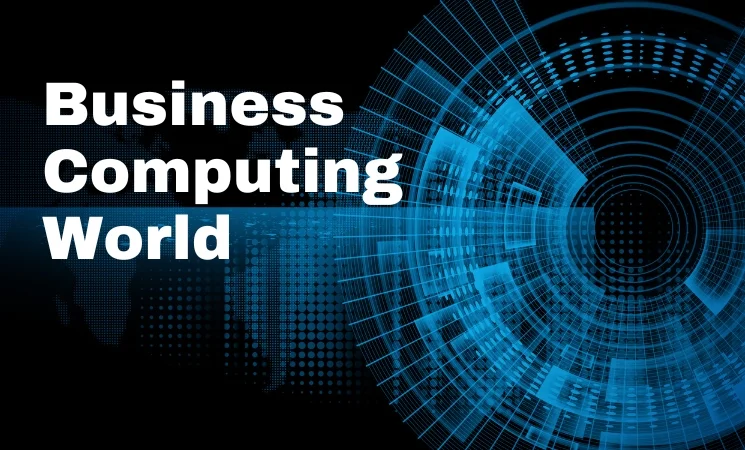Business Computing World – Latest Innovations, Tech Trends, and Digital Transformation Insights

The business computing world is experiencing unprecedented transformation as organizations worldwide embrace cutting-edge technologies to remain competitive in an increasingly digital marketplace. From artificial intelligence reshaping decision-making processes to cloud infrastructure becoming the backbone of modern enterprises, the pace of innovation continues to accelerate. Understanding these technological shifts isn’t just Business Computing World beneficial anymore—it’s essential for business survival and growth in today’s fast-moving economy.
The Current State of Business Computing
Business computing has evolved far beyond simple data processing and spreadsheet management. Today’s enterprise technology landscape encompasses sophisticated ecosystems where artificial intelligence, machine learning, cloud computing, and cybersecurity converge to create powerful operational Business Computing World frameworks. Companies are no longer asking whether they should digitize their operations but rather how quickly they can implement transformative technologies to gain competitive advantages. The modern business computing world demands agility, scalability, and intelligence built into every system and process, creating environments where data-driven insights guide strategic decisions in real-time.
Artificial Intelligence and Machine Learning Integration
Artificial intelligence has moved from experimental technology to mission-critical infrastructure across industries. Businesses are deploying AI-powered tools for everything from customer service chatbots and predictive analytics to supply chain optimization and fraud detection. Machine learning algorithms now analyze millions of data points instantaneously, identifying patterns and opportunities that human analysts might Business Computing World overlook. Companies leveraging AI effectively report significant improvements in operational efficiency, with some organizations reducing processing times by up to 70% while simultaneously improving accuracy rates.
The democratization of AI tools means that even small and medium-sized businesses can now access sophisticated machine learning capabilities without massive IT investments. Cloud-based AI services allow organizations to implement intelligent automation, natural language processing, and computer vision applications Business Computing World through simple API integrations. This accessibility is leveling the playing field, enabling smaller companies to compete with enterprise giants by making smarter, faster decisions backed by advanced analytics.
Cloud Computing Revolution
Cloud infrastructure has fundamentally transformed how businesses approach computing resources and scalability. The shift from on-premises servers to cloud-based solutions continues to accelerate, with hybrid and multi-cloud strategies becoming standard practice for enterprises seeking flexibility and resilience. Organizations can now scale their computing power up or down within minutes, paying only for the resources they Business Computing World actually use rather than maintaining expensive hardware that sits idle during low-demand periods.
Modern cloud platforms offer far more than just storage and processing power. They provide comprehensive ecosystems including database management, development tools, AI services, security features, and collaboration platforms all integrated seamlessly. This consolidation reduces complexity while increasing capability, allowing IT teams to focus on innovation rather than infrastructure maintenance. The reliability of major cloud providers, often exceeding 99.9% uptime, has made cloud computing the default Business Computing World choice for businesses prioritizing operational continuity.
Cybersecurity in the Digital Age

As Business Computing World becomes increasingly sophisticated, cybersecurity threats evolve in parallel, becoming more complex and potentially devastating. Ransomware attacks, data breaches, and sophisticated phishing schemes pose existential risks to organizations of all sizes. The average cost of a data breach now exceeds millions of dollars when accounting for remediation, legal fees, regulatory fines, and reputational damage. This reality has elevated cybersecurity from an IT concern to a boardroom priority, with executives Business Computing World recognizing that digital security directly impacts business viability.
Modern cybersecurity strategies embrace zero-trust architectures, where no user or system is automatically trusted regardless of whether they’re inside or outside the network perimeter. Advanced threat detection systems powered by AI continuously monitor network traffic, user behavior, and system activities to identify anomalies that might indicate security breaches. Multi-factor authentication, endpoint protection, and regular security training for employees have become non-negotiable components of Business Computing World comprehensive security frameworks. Organizations are also investing heavily in incident response planning, recognizing that preparation for security events is just as important as prevention.
Digital Transformation Strategies
Digital transformation extends beyond simply adopting new technologies—it requires fundamental reimagining of business processes, company culture, and customer engagement strategies. Successful digital transformation initiatives align technology investments with clear business objectives, ensuring that innovation drives measurable value rather than technology for technology’s sake. Companies leading in digital maturity demonstrate common characteristics: strong leadership commitment, employee empowerment through Business Computing World technology, customer-centric design thinking, and willingness to experiment and learn from failures.
The most effective digital transformation roadmaps take phased approaches, identifying high-impact areas for initial implementation while building organizational capabilities for continuous evolution. This might involve automating repetitive manual processes first, then progressing to more complex initiatives like implementing AI-driven analytics or redesigning customer experiences. Change management becomes crucial, as technological transformation inevitably disrupts established workflows and requires employees to develop Business Computing World new skills and adapt to different working methods.
Remote Work Technology Infrastructure
The business computing world has rapidly adapted to support distributed workforces, with remote and hybrid work models becoming permanent fixtures rather than temporary arrangements. This shift demanded immediate investment in collaboration platforms, virtual private networks, cloud-based productivity tools, and endpoint security solutions that maintain productivity and security regardless of employee location. Video conferencing technology has evolved from simple communication tools to sophisticated collaboration platforms supporting virtual whiteboards, real-time document editing, and immersive meeting experiences.
Organizations are now designing computing infrastructure specifically optimized for remote scenarios, ensuring that employees working from home have identical access to resources, applications, and support as those in traditional offices. This includes implementing unified communications systems that integrate voice, video, messaging, and file sharing into seamless experiences. The focus has shifted toward results-oriented work environments where technology enables productivity measurement based on output rather than physical presence, fundamentally changing how businesses evaluate employee performance and manage teams.
Data Analytics and Business Intelligence
Data has become the most valuable asset in modern business computing, with organizations collecting massive volumes of information from countless sources including customer interactions, operational systems, IoT devices, and market trends. Advanced analytics platforms transform this raw data into actionable insights, enabling businesses to understand customer behavior, optimize operations, predict market trends, and identify new revenue opportunities. The companies thriving in today’s marketplace are those that have mastered the art of turning data into strategic advantages.
Modern business intelligence tools have become remarkably user-friendly, allowing non-technical employees to create sophisticated visualizations, run complex queries, and generate reports without relying on IT departments or data scientists. Self-service analytics democratizes information access across organizations, empowering decision-makers at all levels with real-time insights. Predictive analytics takes this further, using historical data and machine learning algorithms to forecast future trends, helping businesses proactively address challenges and capitalize on opportunities before competitors recognize them.
Edge Computing and IoT Integration
Edge computing represents a paradigm shift in how businesses process and analyze data, bringing computational power closer to where information is generated rather than sending everything to centralized cloud servers. This approach dramatically reduces latency, decreases bandwidth costs, and enables real-time decision-making critical for applications like autonomous vehicles, smart manufacturing, and remote healthcare monitoring. The Internet of Things continues expanding, with billions of connected devices generating unprecedented data volumes that require intelligent processing at the network edge.
Manufacturing facilities are implementing edge computing to enable predictive maintenance, where sensors monitor equipment conditions and AI algorithms predict failures before they occur, preventing costly downtime. Retail environments use edge-based computer vision to analyze customer behavior in real-time, optimizing store layouts and inventory placement. These implementations demonstrate how edge computing and IoT integration create competitive advantages by enabling faster, smarter responses to changing conditions while reducing dependency on constant cloud connectivity.
Automation and Process Optimization
Robotic process automation has matured into a cornerstone technology for operational efficiency, handling repetitive tasks with speed and accuracy that far exceed human capabilities. Businesses are automating everything from invoice processing and customer onboarding to compliance reporting and inventory management. This automation doesn’t eliminate jobs as much as it transforms them, freeing employees from mundane tasks to focus on strategic, creative, and interpersonal activities that truly require human judgment and innovation.
Intelligent automation combines RPA with AI and machine learning, creating systems that not only follow predefined rules but also learn from experience and adapt to changing circumstances. These technologies handle exceptions, make contextual decisions, and continuously improve their performance without constant human intervention. Organizations implementing comprehensive automation strategies report dramatic improvements in processing speed, error reduction, customer satisfaction, and employee morale as workers engage in more meaningful and rewarding activities.
The Future of Business Computing
Looking ahead, the business computing world will continue evolving at breakneck speed, with emerging technologies like quantum computing, advanced AI models, and next-generation connectivity reshaping what’s possible. Quantum computers promise to solve complex optimization problems in seconds that would take traditional computers millennia, potentially revolutionizing fields like drug discovery, financial modeling, and cryptography. Meanwhile, AI continues advancing toward more general intelligence, capable of understanding context, reasoning abstractly, and adapting to novel situations with minimal training.
The convergence of technologies will create entirely new business capabilities and models that we’re only beginning to imagine. Augmented reality workspaces, AI-powered autonomous business processes, and blockchain-based trust systems represent just glimpses of what’s emerging. Organizations that stay informed about these developments, maintain flexible technology infrastructures, and cultivate cultures of continuous learning will be best positioned to thrive in this dynamic business computing world. The key to success lies not in predicting exactly which technologies will dominate but in building organizational agility to rapidly adopt and adapt to whatever innovations emerge next.



